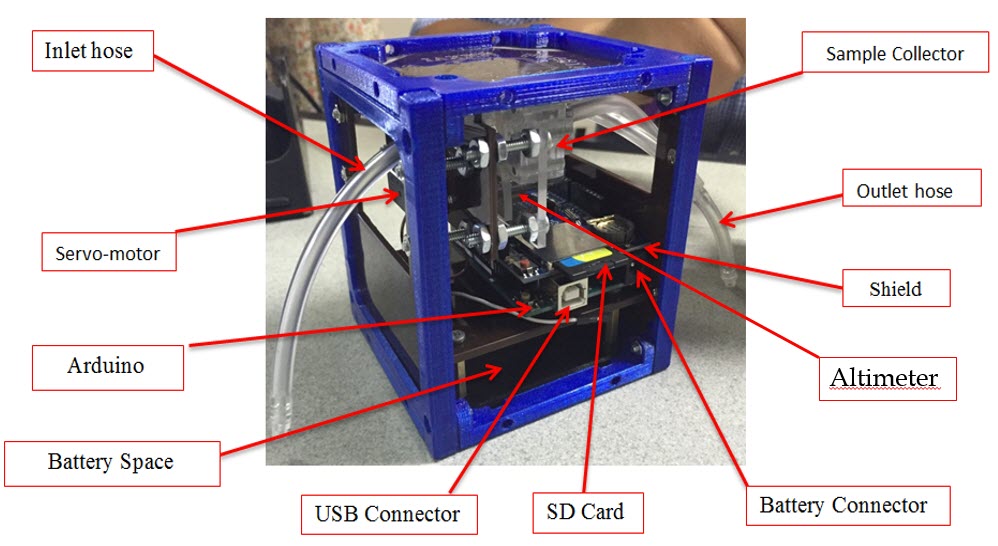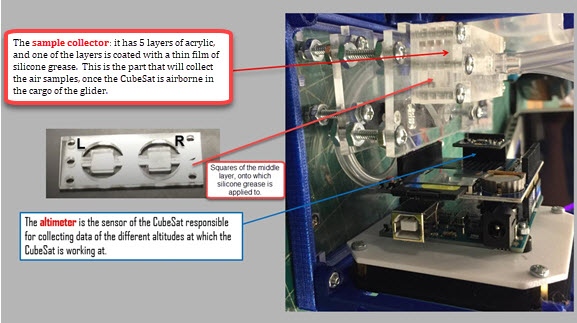| Home | Who Are PRCubeStars | Projects | Updates | Events | Fungal Spores |
What is a CubeSat?
A CubeSat is a low-cost miniaturized spacecraft, often referred as nanosatellite. These nanosatellites were initially developed in the late 1990s by professors Dr. Jordi Puig-Suari and Dr. Bob Twiggs from California Polytechnic State University and Stanford University, respectively. Nowadays, CubeSats have been adopted worldwide, including NASA (National Aeronautics and Space Administration) and other government, universities, and research entities as a venue for space exploration, mentoring and education of space and aeronautic sciences (find more information here). For example, NASA employs CubeSats for laser communication, satellite-to-satellite communications among other initiatives (find information here).
The basic structure of a CubeSat is a single unit of 10 x 10 x 10 cm, and it weighs approximately 3 lbs. The small dimensions and lightweight allows integration of low-cost materials and equipments for space exploration, and in the case of PRCubeStars to explore the stratosphere microbiome (refer to the projects page).
It is important to mention that the fabrication expertise of Dr. Sierra-Sastre and Daron Westly, as well as the computer science and Making expertise of Damaso Cardenales-Colón and Carlos Rodríguez have been fundamental in mentoring the students in the design, assembly, and programming of the CubeSat.
Images of the PRCubeStars’ CubeSat
 The CubeSat. This is our CubeSat, with all labels on all the its parts. (Source of the image above are students and mentors of PRCubeStars).
The CubeSat. This is our CubeSat, with all labels on all the its parts. (Source of the image above are students and mentors of PRCubeStars).
 CubeSat’s Sample Collector and Altimeter. This image shows a close up of the CubeSat, including sample collector, the middle layer of the sample collector, and the altimeter. (Source of the image above are students and mentors of PRCubeStars).
CubeSat’s Sample Collector and Altimeter. This image shows a close up of the CubeSat, including sample collector, the middle layer of the sample collector, and the altimeter. (Source of the image above are students and mentors of PRCubeStars).
Click here to return to the PRCubeStars main page
Copyright 2017 PRCubeStars